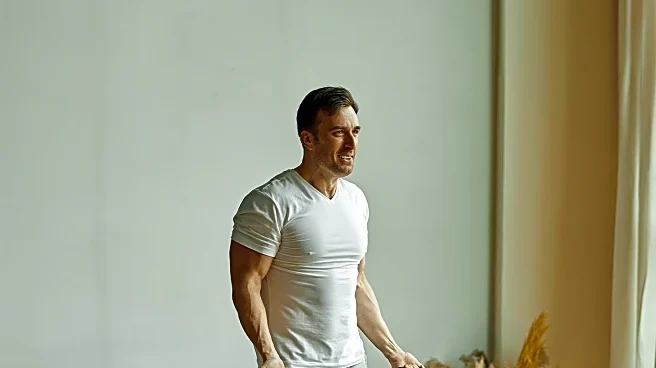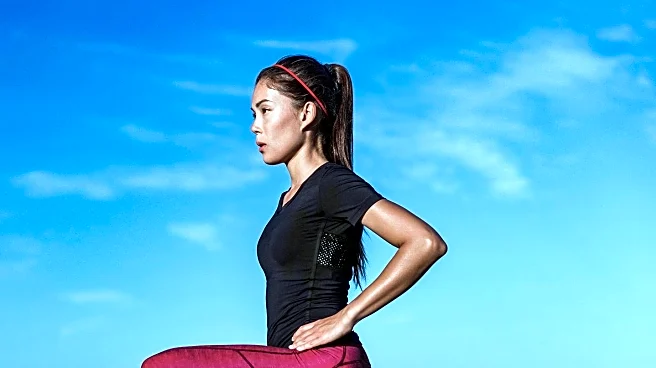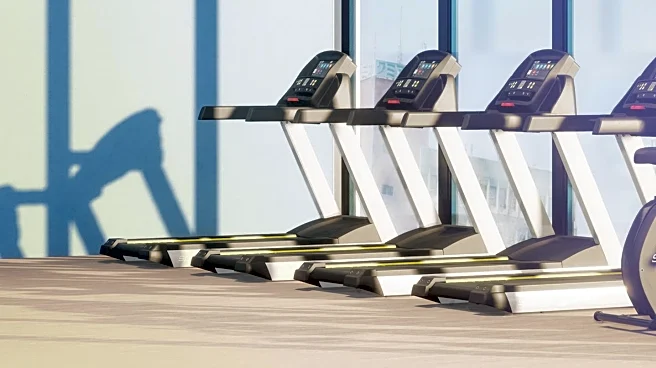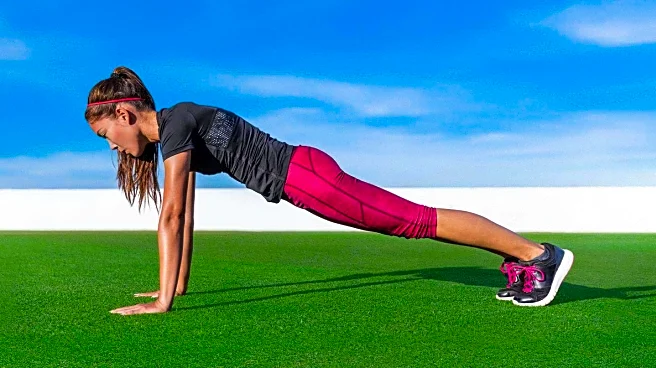What is the story about?
What's Happening?
Denise Chakoian, a certified fitness trainer and owner of Core Cycle and Fitness La Gree, emphasizes the importance of daily exercise for men over 45 to combat age-related muscle loss. She suggests a routine of five morning exercises that include bodyweight squats, pushups, plank holds, lunges, and light jogging. These exercises are designed to maintain muscle strength, improve balance and coordination, and prevent joint stiffness. Chakoian highlights that consistent daily activity can enhance energy levels and hormone balance, contributing to overall strength and independence as men age.
Why It's Important?
As men age, maintaining muscle mass becomes crucial for overall health and mobility. Regular exercise helps prevent muscle deterioration, which can lead to decreased physical capabilities and increased risk of injury. By following Chakoian's recommended exercises, men over 45 can improve their physical health, reduce the risk of falls, and maintain their independence. This approach not only supports physical well-being but also contributes to mental health by boosting energy and mood. The emphasis on daily activity underscores the importance of consistency in achieving long-term health benefits.
What's Next?
Men over 45 are encouraged to incorporate these exercises into their daily routine to maintain muscle health and prevent age-related decline. Fitness experts may continue to develop tailored exercise programs that address the specific needs of aging populations. As awareness of the importance of physical activity in older age grows, there may be increased demand for fitness classes and resources aimed at this demographic. Additionally, healthcare providers might advocate for regular exercise as a preventive measure against age-related health issues.
Beyond the Headlines
The focus on daily exercise for older adults highlights broader societal trends towards proactive health management and aging well. As life expectancy increases, there is a growing need for strategies that support healthy aging and prevent chronic conditions. This development may influence public health policies and encourage investment in community fitness programs. Furthermore, the cultural shift towards valuing physical activity at all ages could lead to more inclusive fitness environments and resources tailored to older adults.
AI Generated Content
Do you find this article useful?














